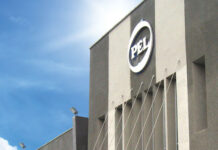Lucky Cement has an enviable position in the market, by all metrics. It is the largest cement player in Pakistan with a capacity of 12 million tonnes. The company has a country wide market share of 17.5%, with a 13.1% share in the north, and a 29.7% share in the south (a distinction that matters in the geographically bifurcated cement market in Pakistan). With the government reducing the federal excise duty, and also announcing a construction package, you would think Lucky Cement could sit back and enjoy its future gains.
Except Lucky Cement is, well, lucky, for having its finger in the pie for multiple industries, thanks to auto company Kia Lucky Motors, and pharmaceutical company ICI Pakistan, which is also Lucky’s subsidiary. Not only will Lucky – the flagship company of the Yunus Brothers’ group owned by billionaire Muhammad Ali Tabba – benefit from favourable government construction policies, but also from lower interest rates driving auto sales, and potential Covid-19 vaccine distribution. The company is also soon to open up a cement facility in Iraq, and a coal-fired plant a little closer to home, at Bin Qasim port.
These factors are why Shankar Talreja, research analyst at Topline Securities, an investment bank, is upbeat about Lucky, and expects an earnings of Rs48 per share in fiscal year 2021, and Rs108 per share in fiscal year 2022.
“We now expect 3-year (fiscal year 2022-24) earning CAGR [compound annualised growth rate] of 43% primarily on the back of induction of 660-megawatt (MW) coal power plant, better-than-expected KIA [Motors] performance, improvement in cement business margins and commercial operations of the integrated [cement] plant in Iraq,” Talreja said in a note issued to clients on July 27.
Let us review Lucky’s operations one by one. First, Lucky invested Rs14.9 billion in a partnership with Korean KIA Motors Corporation, and owns 71.6% of Kia Lucky Motors. It launched the KIA Sportage, a sport utility vehicle (SUV), in July 2019, and the hatchback Picanto in September 2019. Both have done very well so far, with the company booking between 1,500 to 2,000 cars a month, which will probably lead to annual sales of between 18,000 to 24,000 units. Why are they so popular? The Sportage is 37% cheaper than the next available substitute. Plus, it helps that there has been a recent fall in car loan interest rates.
Kia Lucky Motors is also looking to launch between two to four new models before June 2021, with the next launch expected to be a sedan, the Cerato. The hurry is because next June is when the Automotive Policy 2016-2021 expires, along with its tariff benefits. Under the scheme, Kia is entitled to 10% customs duty on non-localised parts for five years (compared to 32.5% for existing players) and 25% customs duty on localised parts (compared to 50% for existing players) for five years. Kia Lucky also benefits from a tax holiday for 10 years due to its presence in Bin Qasim Industrial Park, unlike Pak Suzuki, Indus Motors and Honda Car.
This is why Talreja expects the Kia Lucky’s profits to stand around Rs2.2 billion in fiscal year 2021, and Rs3.3 billion in fiscal year 2022.
Second, Lucky owns a 55% stake in ICI Pakistan. This subsidiary just happens to be the sole distributor of AstraZeneca drugs in Pakistan – and AstraZeneca just happened to be developing a vaccine with scientists at Oxford University to combat the global pandemic Covid-19, currently dubbed “AZD 2111”. The prospects appear positive for this vaccine: during trials, one dose of AZD 1222 led to a four times increase in antibodies to Covid-19 in 95% of participants. The cost per dose is expected to be around $2-3, and assuming three doses, the cost per patient will end up around Rs1,000.
ICI already has a longstanding partnership with AstraZeneca, conducting business worth Rs1.5 billion. As of now, the company has agreed to supply at least 400 million doses and secured manufacturing capacity for one billion doses. Assuming the vaccine works, even if only 0.5% of Pakistan’s population gets the vaccine, that will translate into a profit of Rs120 million for ICI. The company’s earnings are expected to reach Rs3.7 billion in fiscal year 2021, up 13% from the previous year.
Third, Lucky Cement is installing a brand new 1.2 million tonnes cement manufacturing facility in Iraq, partnering with Al Shamookh Group. The company already has an existing grinding unit in that country with a capacity of 1.742 million tonnes. This new facility is expected to start operation in the third quarter of fiscal year 2021, and Talreja expects it to bring in profit of Rs1.4 billion in fiscal year 2022, and Rs1.8 billion in fiscal year 2023.
Locally, the company’s subsidiary Lucky Electric Power Company Limited is setting up a 660 MW coal-fired power plant at Bin Qasim, which is expected to start operating in July 2021. The $885 million plant is expected to show benefits in the future: “We estimate this power plant to contribute Rs37, Rs47, and Rs50 in fiscal years 2022, 2023, and 2024 respectively to the bottom line of LUCK,” says Talreja.
Fourth, Lucky Cement is poised to do well because of cement’s future in the country. The State Bank of Pakistan has made it mandatory for banks to allocate 5% of their private sector advances for the construction sector. The government has also signed new projects under the China Pakistan Economic Corridor (remember that?) worth $11 billion. These include hydro power projects like Azad Pattan and Kohala, worth $1.7 billion and $2.4billion respectively, and which are expected to be completed by 2026. These projects are expected to generate annual cement demand in the range of 1.2 to 1.5 million tonnes, which is 3.4% of total cement dispatches. The development of Gwadar, and motorways, and special economic zones will also keep the cement sector, and Lucky Cement, busy for years to come.
Is there any risk to watch out for, apart from general price fluctuation in cement locally or internationally? Yes, and that is a verdict pending in the Lahore High Court. In 2009, the Competition Commission of Pakistan (CCP) passed an order against cement manufacturers for allegedly forming a cartel, and imposed a penalty at 7.5% of total revenue on each company. The penalty amount against the industry is Rs6 billion, but the penalty against Lucky Cement is a sizable Rs1 billion. An unfavourable decision would weigh the company down, though the decision can be appealed in a higher court.


























Shall one buy shares of Lucky Cement which encompasses pharmaceutical & Car etc.
Please advise
Nice company it was nit fallen in hard times of 2018/2019. It is tried and tested stock but you may get above average profit in it. So you can diversify well.
No way analyst calls no better than tossing a coin…wish some anlyst ever give a bearish call…
ICI’s pharmaceutical business unit is tiny compared to it Soda Ash and other other business units. Wouldn’t call it a pharmaceutical company